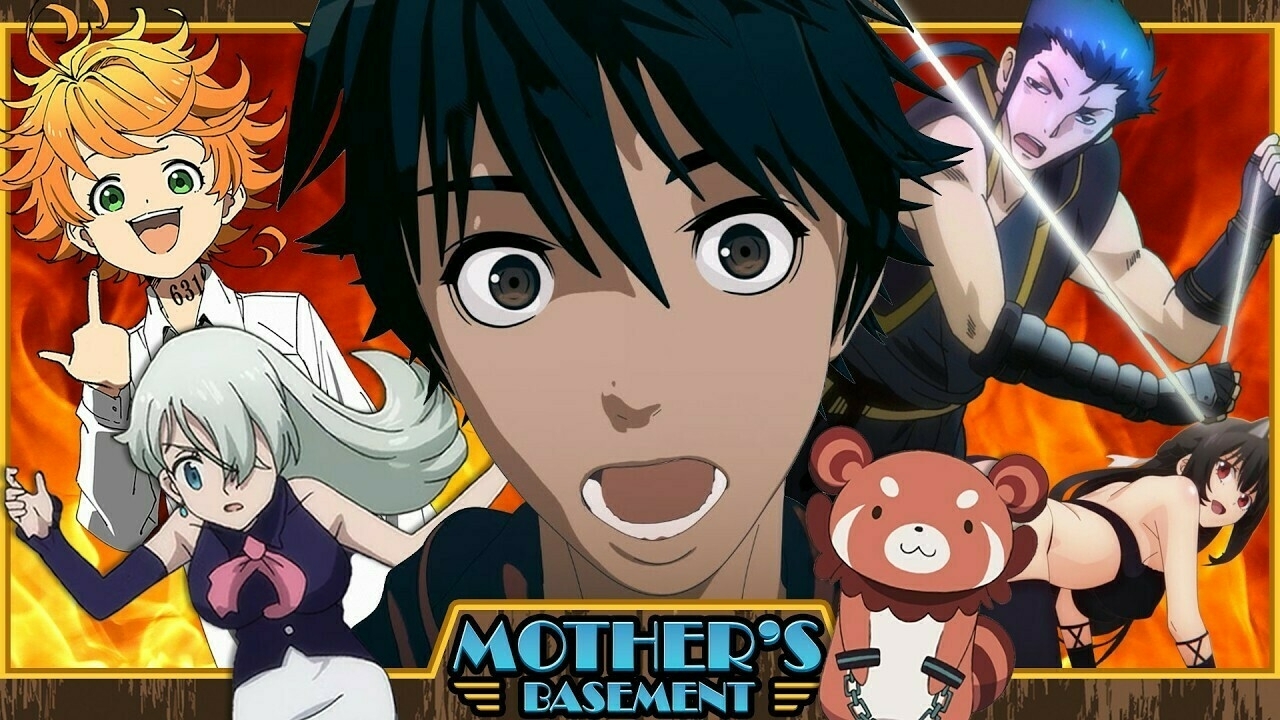Category: animation
You are viewing all posts from this category, beginning with the most recent.
Two legendary #scifi icons, each with their own legendary maneuver, face off against the other in an epic showdown. Who will prevail? We may never know. The top keeps spinning… #sttng #startrek #animation www.youtube.com/watch
The WORST Anime of ALL TIME - 10th Anniversary: The Complete List

Part of the payment I must make to Satan to save my soul from eternal damnation is to prepare a detailed listing of all anime that Geoff lists in his Mother’s Basement videos on YouTube. Just kidding. I do it because I love it and want to help peeps retain the font of knowledge that Geoff shares with us in his various videos. Today’s video is a comprehensive breakdown of the ten worst anime of all time. Yes, the worst of the worst or the animated equivalent of emotional torture.
NOTE: This is a list of anime series to AVOID. These shows are NOT like the Hottest Trash which you can watch because sometimes bad == good. So, please don’t watch these, unless you’re a sadist… or a masochist who wishes to inflict emotional pain on unsuspecting victims. Knowing, according to G.I. Joe, is half the battle. Be kind. Spare your mind.
Now for the list. I’m sorry:
- Rent-A-Girlfriend or How to make your entire cast unlikeable
- The Promised Neverland Season 2 which never happened and makes people really mad
- Conception: How to make babies then use them to fight wars
- Seven Deadly Sins … “Really, I blow away mountains for breakfast.” - a mountain. Oof.
- My Life as Inukai-san’s Dog which is about… um, “animal husbandry” but borderline illegal?
- The Happy Science Collection: Religious cults, brainwashing, & propaganda for children!
- The Irresponsible Galaxy Tylor. I’ve never been more ashamed, and now consider it misspelled.
- Hand Shakers or Motion Sickness: The Animation, now with more sexual perversion!
For the coup de gras Geoff combines the two worst into a Mega Worst, both of which just happen to be Crunchyroll Originals:
2 (and 1). Ex-Arm - All the Don’ts and None of the Do’s of Anime & Visual Storytelling 1 (and 2). Gibiate - Mind control agitprop films for insane people being held at CIA blacksites
Once again I feel the need to remind you of the psychological damage that you can incur from viewings of the above listed media. Please take this list as a warning and keep this guide handy when reviewing new series to add to your watchlist in order to avoid accidental damage to the psyches of you or those you care for.
For additional details, please refer to the original source: www.youtube.com/watch
I believe Spice Frontier is one of the more unique spins on #SciFi that I’ve ever seen, and I’ve seen most of it! Combine the idea of food as a tool for diplomacy with exciting space exploration and you get this! Impressive work from all departments! #animation #pilot #TV youtu.be/SeAqnHywr…
I love Mobile Police #Patlabor, an #anime #mecha series unlike any other. It’s been around for a very long time and will be returning next year with Patlabor EZY. If you are new to Patlabor, check out STEVEM’s fantastic retrospective. #animation #TV #movies #scifi #mamoruoshii www.youtube.com/watch
For oldsters: Watch this video to confirm your admiration for these shows. For youths: Watch this video to find new shows that’ll blow your mind. Conclusion: Any list that includes Cowboy Bebop must be accurate. That is all. #scifi #tv #90s youtu.be/uT42ldiYM…
The Canadian #ProgRock band #Rush has been one of my favorite bands period. I also adore the art of #animation. In 1985 the two came together in an animated short broadcast on Canadian TV that year. Now you can watch it. It’s not great, but the music is. #music #scifi #TV www.youtube.com/watch
Winner of Film of the Year and the People’s Choice award for the 2024 Rookie Awards, “Student Accomplice” is the entry from a team of 30 from Brigham Young University’s School of #Animation. It’s easy to see why :) #TheRookies #BYU #Shorts www.youtube.com/watch
Wow. How odd. #StarTrek #scifi #STTNW #SpongebobSquarepants #TV #animation www.youtube.com/watch
I adore the Wachowskis 2008 cinematic masterpiece Speed Racer, but it’s taken almost two decades for most of the world to recognize its brilliance. Patrick (H) Willems latest video explains why. Also, just watch it, for the first time or again. #movies #speedracer #anime www.youtube.com/watch

If you’ve never seen #Floor796, prepare to be amazed. A single artist, in their free time, has been creating an enormous, tile-based animated #GIF filled with all manner of characters from all manner of media. They’ve just added a new tile today. #animation #art #creatives #ZeroAI floor796.com